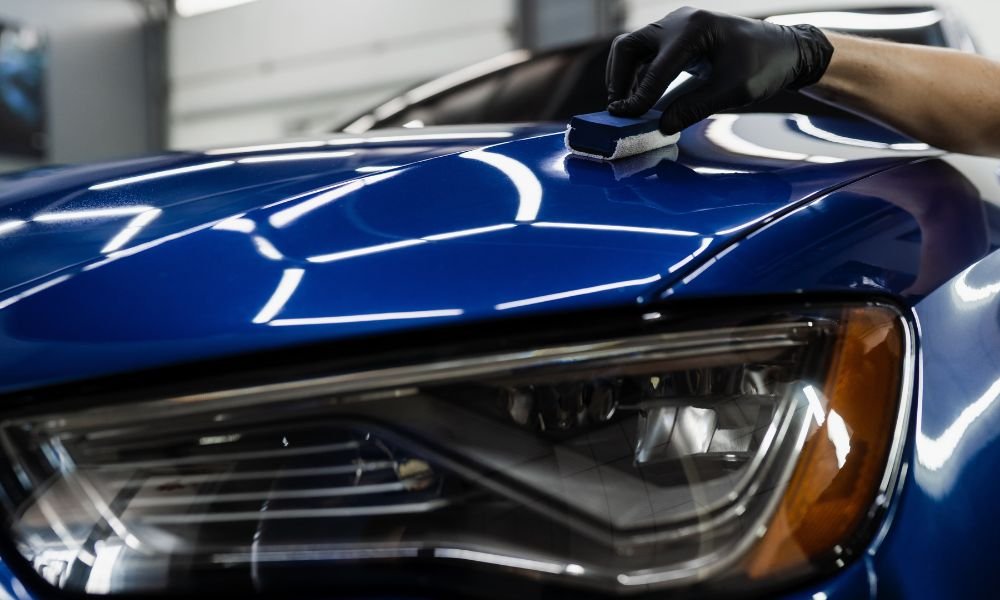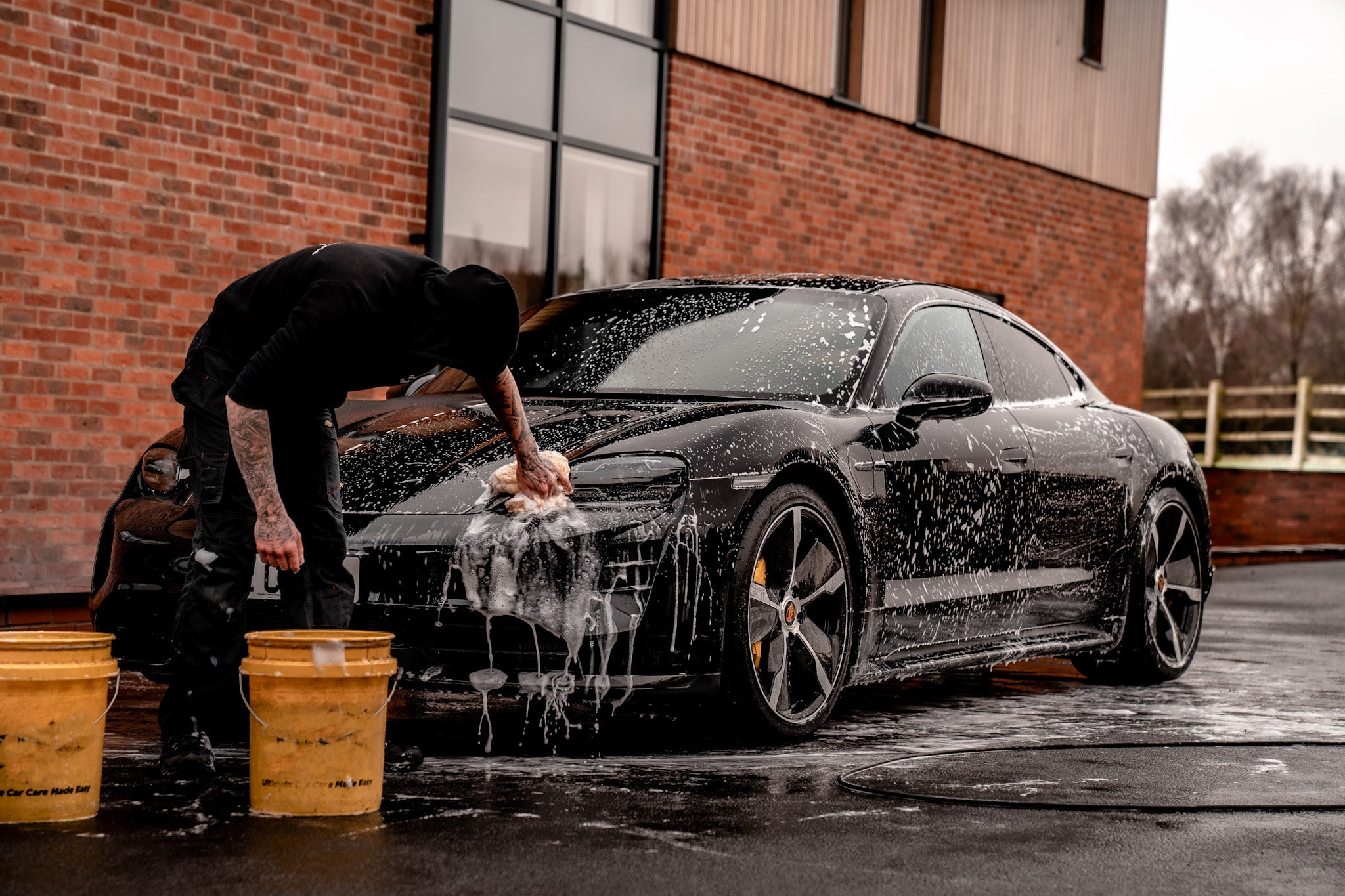Choose trusted car detailing to enhance your vehicle’s appearance.
Wiki Article
A Comprehensive Guide to the Kinds of Ceramic Covering on the marketplace
Ceramic layers have arised as an essential solution across various markets due to their distinct residential or commercial properties and applications. As we check out the distinct attributes and applications of these layers, the effects for performance and longevity become increasingly noticeable, raising questions about which type could best fit your demands.Understanding Ceramic Coatings
Ceramic finishes are innovative safety options that have obtained appeal in different industries, specifically in auto and aerospace applications. These finishes include a liquid polymer that, when cured, forms a sturdy, hydrophobic layer on the surface area of the substrate. This layer gives boosted resistance to ecological impurities, UV radiation, and chemical exposure, consequently prolonging the life and visual appeal of the underlying material.The fundamental element of ceramic layers is silica, which adds to their solidity and sturdiness. The application process generally entails surface area prep work, application of the finish, and healing, which can be achieved through warm or UV light. When healed, ceramic coatings display phenomenal bonding residential properties, permitting them to adhere strongly to a variety of surface areas, consisting of metals, plastics, and glass.
In enhancement to their safety functions, ceramic layers also supply ease of upkeep. Their hydrophobic nature reduces the adherence of dirt and gunk, making cleansing simpler and much less frequent. In general, the fostering of ceramic coverings stands for a considerable improvement in surface security innovation, giving both functional and aesthetic advantages throughout numerous markets.
Kinds of Ceramic Coatings
Different sorts of ceramic finishes are offered, each designed to meet specific efficiency needs and applications - Auto Detailing. The most typical types include:Silica-based Coatings: These finishes mostly consist of silicon dioxide and are recognized for their resilience and chemical resistance. They are widely utilized in automobile and industrial applications.
Titanium Dioxide Coatings: Popular for their photocatalytic buildings, titanium dioxide coverings are often used in atmospheres where self-cleaning and antifungal buildings are desirable, such as in structure products and auto coatings.
Zirconia Coatings: Defined by their high-temperature stability and thermal resistance, zirconia finishings are utilized in applications such as wind turbine engines and high-performance automobile parts.
Alumina Coatings: Displaying superb solidity and thermal stability, alumina layers are often used in wear-resistant applications, consisting of reducing devices and commercial equipment. - Paint Protection Film
Hybrid Coatings: Incorporating the homes of various materials, hybrid finishings offer improved efficiency features, making them appropriate for one-of-a-kind and requiring applications.
Each kind of ceramic coating serves unique functions, enabling users to pick the most ideal remedy based upon certain environmental conditions and performance demands.
Advantages of Ceramic Coatings
Ceramic find more information finishings, in certain, offer various advantages that make them significantly preferred among suppliers and consumers alike. These coverings are immune to scratches, chemicals, and UV rays, guaranteeing that the underlying surface area continues to be secured over time.Along with resilience, ceramic finishes give exceptional hydrophobic residential properties, enabling for simple cleansing and upkeep. This water-repellent nature decreases the adherence of dust, gunk, and other pollutants, which can extend the visual appeal and performance of the surface area. Ceramic finishes can significantly improve thermal resistance, making them perfect for applications that withstand high temperatures.

Application Process
When applying ceramic coverings, a careful technique is vital to attain optimal results. The application procedure commonly starts with comprehensive surface prep work. This involves washing, decontaminating, and polishing the surface to get rid of all impurities, including dirt, grease, and prior waxes or sealants. A clean surface guarantees correct attachment of the coating.As soon as the surface is prepped, the following action is to apply the ceramic finishing. This can be done using an applicator pad or a microfiber towel, guaranteeing even protection. It is crucial to function in little areas to preserve control and stop premature healing. The finishing ought to be applied in thin layers, Visit This Link as thicker applications can lead to uneven coatings.
After application, the covering requires a certain treating time, typically varying from a few hours to a full day, depending on the product. During this moment, it is essential to prevent direct exposure to wetness or contaminants. A gentle buffing may be essential after treating to boost the gloss and get rid of any type of high places. Complying with these steps diligently will maximize the effectiveness and long life of the ceramic finishing, providing a sturdy safety layer for the surface.
Upkeep and Long Life
To make certain the durability and performance of a ceramic coating, routine upkeep is essential. Ceramic coatings, understood for their longevity and protective high qualities, need details care routines to maximize their life expectancy and efficiency.Along with normal washing, periodic assessments are critical. Look for signs of wear or damage, such as hydrophobic residential or commercial properties decreasing or surface area flaws. If essential, a light gloss might be related to rejuvenate the covering without stripping it away.
Additionally, the application of a booster spray can boost visit the layer's hydrophobic results and restore its gloss. This is specifically valuable for finishings that have been in use for an extensive period. Inevitably, by adhering to these maintenance practices, one can substantially prolong the life of a ceramic layer, making certain that it remains to give optimum protection against environmental variables and maintain the visual charm of the car.
Final thought

Report this wiki page